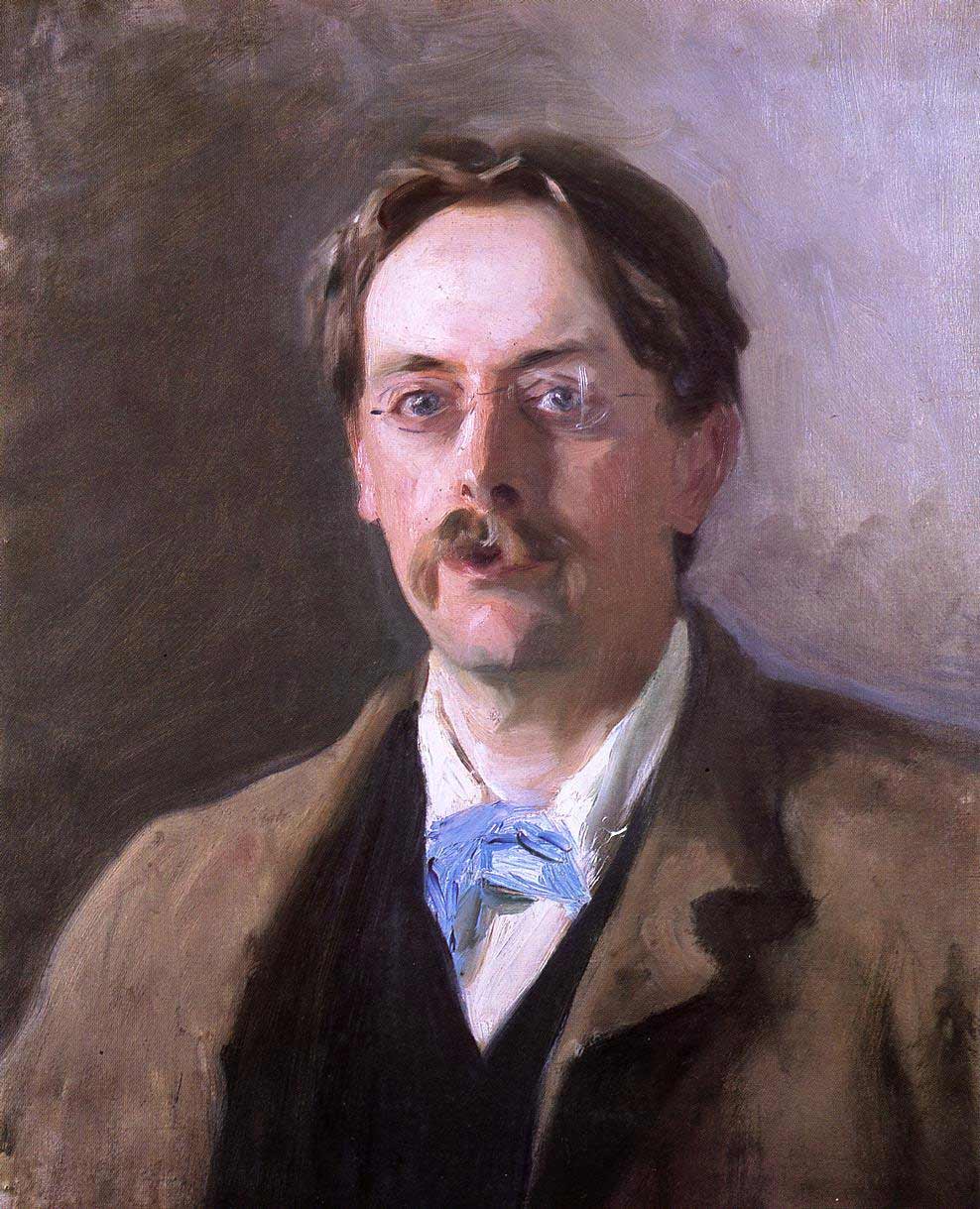From http://upload.wikimedia.org/wikipedia/commons/2/2e/Edmund_Gosse_by_John_Singer_Sargent.jpg
I’ve stood in front of the painting of Edmund Gosse by John
Singer Sargent in the National Portrait Gallery and tried to work out the mood
of the sitter. He stares out at us, but there is something apprehensive in his
expression and it is certainly not a formal portrait – indeed, he looks a
little dishevelled.
The picture was painted in 1886, when Edmund was 36 or 37 years
old and at a time when he was being attacked for the inaccuracies
in his book From Shakespeare to Pope: an enquiry
into the causes and phenomena of the rise of classical poetry in England.
The book was based on lectures which Edmund had given at Cambridge University and,
earlier, while visiting the United States. He was very much part of the London
social scene and mixed with famous authors and artists, and had many infuential friends and contacts
with whom he dined, so the adverse reaction of academics to his work was not
welcomed. However, it was probably deserved, as Edmund was always capable of being
careless and of stretching the truth.
Although Edmund loved
his wife Nellie and their three children (who were 9, 7 and 5 years old at
the time the picture was painted), he also had homosexual relationships, an
especially close friendship developing with the sculptor Hamo Thornycroft. It
is likely also that Sargent was homosexual and he met Edmund at a house party
in the Cotswolds the year before he painted this portrait. Perhaps the casual
nature of Edmund’s appearance in the picture is a reflection of those relaxed
times where open expressions of homosexual feelings were possible? But why the
look of apprehension?
Edmund had a difficult relationship with his father, Philip
Henry Gosse, to be detailed much later in the autobiographical Father and Son, Edmund’s best-known, and probably inaccurate, book
published in 1907. Henry Gosse was a distinguished writer and illustrator of
Natural History books and also an expert on several types of aquatic animals. He
and Edmund made collections at the sea shore and they were very close when
Edmund was a young boy, his mother, Emily, having died when he was 7 years old.
Henry’s life was dominated by his deeply-held Christian beliefs and Edmund
found this increasingly stifling, but he was able to break away from his father’s constant
anxiety that he should be saved by moving to London in his late teens. Letters
from Henry kept up the pressure, but Edmund had started to become part of the
freer artistic Establishment. Poor Henry. Poor Edmund. There were still visits from
the son to the father, but there was none of the closeness that they had enjoyed
during Edmund’s boyhood, although Nellie and the children were always welcomed
warmly.
In 1886, Henry was an old man and he died two years later. If
I am right in sensing a look of apprehension in Sargent’s painting, it would have resulted
from his disappointment at the reception of
From Shakespeare to Pope: an enquiry into
the causes and phenomena of the rise of classical poetry in England,
having to maintain some secrecy over his homosexual relationships, and a concern
about his relationship with his father. Henry would have found it impossible to
condone Edmund’s sexual preferences and he still wished that Edmund could be
with him and Emily in Heaven, when the time came.
Of course, I could just be
projecting that on to the portrait, but that’s what it shows to me.
[My thanks to Dr Susan England for discussion about about Hamo
Thornycroft]

No comments:
Post a Comment